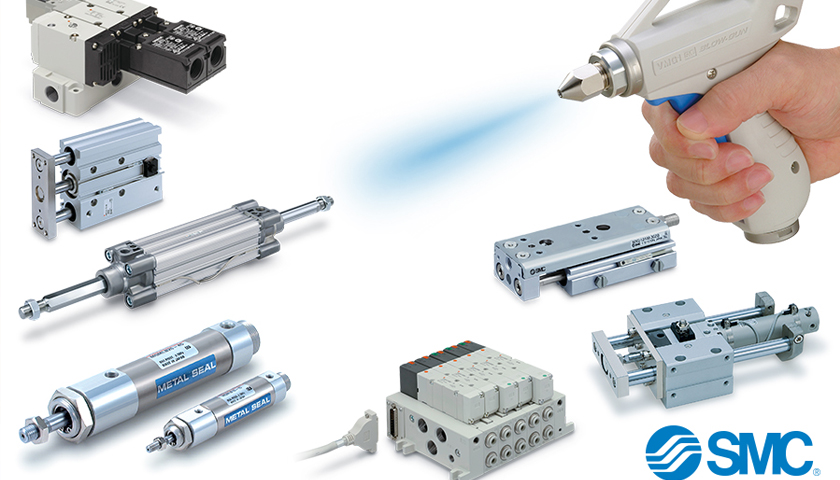Pneumatics are used in a wide range of applications. While the principles of pneumatics can be understood similarly to hydraulics, pneumatics transmit power through air, rather than a liquid, and typically operate at lower pressures (usually around 100 psi). This air is usually compressed, but inert gases such as nitrogen are sometimes used. This compressed air is fed to the pneumatics using a receiver, which a compressor pumps air into.
While pneumatics are used in many different environments, they are most commonly used in factory automation. The pneumatics are used heavily in manufacturing plants to maneuver and piece together different components. Once pro- grammed, pneumatics carry out repetitive actions at efficient speeds. While a similar rule applies for hydraulics, there are some benefits of using pneumatics. The use of compressed air within the pneumatic system, means that pneu- matics are more gentle. For this reason, pneumatics are frequently used in more delicate and precise applications, especially controlled pressing or squeezing.
Another benefit of compressors is that they are typically easier and cheaper to maintain. The lack of oil in the systems means sludge and grime wont build up within the system. This helps keep the system clean and running smoothly. The lack of oil also means that the chance of a fire occurring is greatly reduced, making pneumatics a safer option than many of the alternatives too.
Telford Compressed Air Services can provide a wide range of compressors and pneumatic fittings. From stand-alone mechanical valves to multi-station manifolds, our range of equipment is vast. A well functioning pneumatics system is reliant on a high quality compressor. TCAS can provide compressors from industry leading brands such as HPC. This means that you can be absolute assured in the quality of products that they offer.


awesome